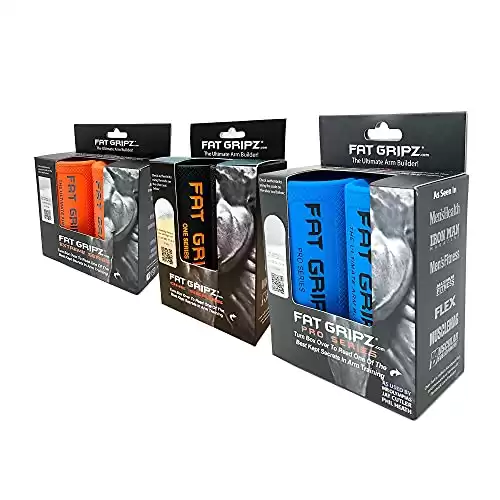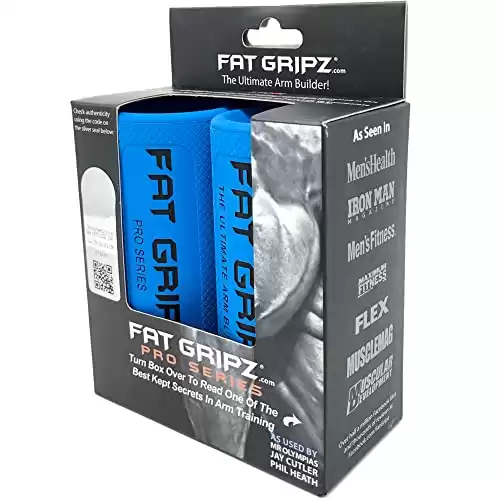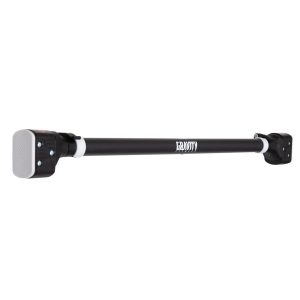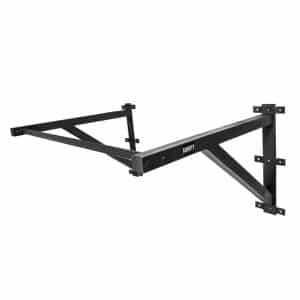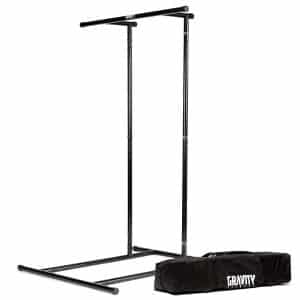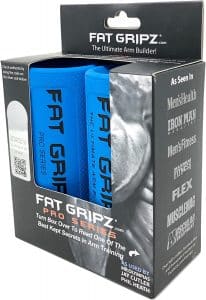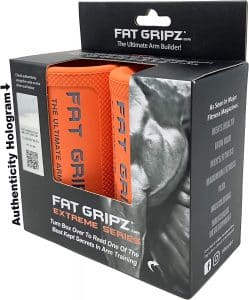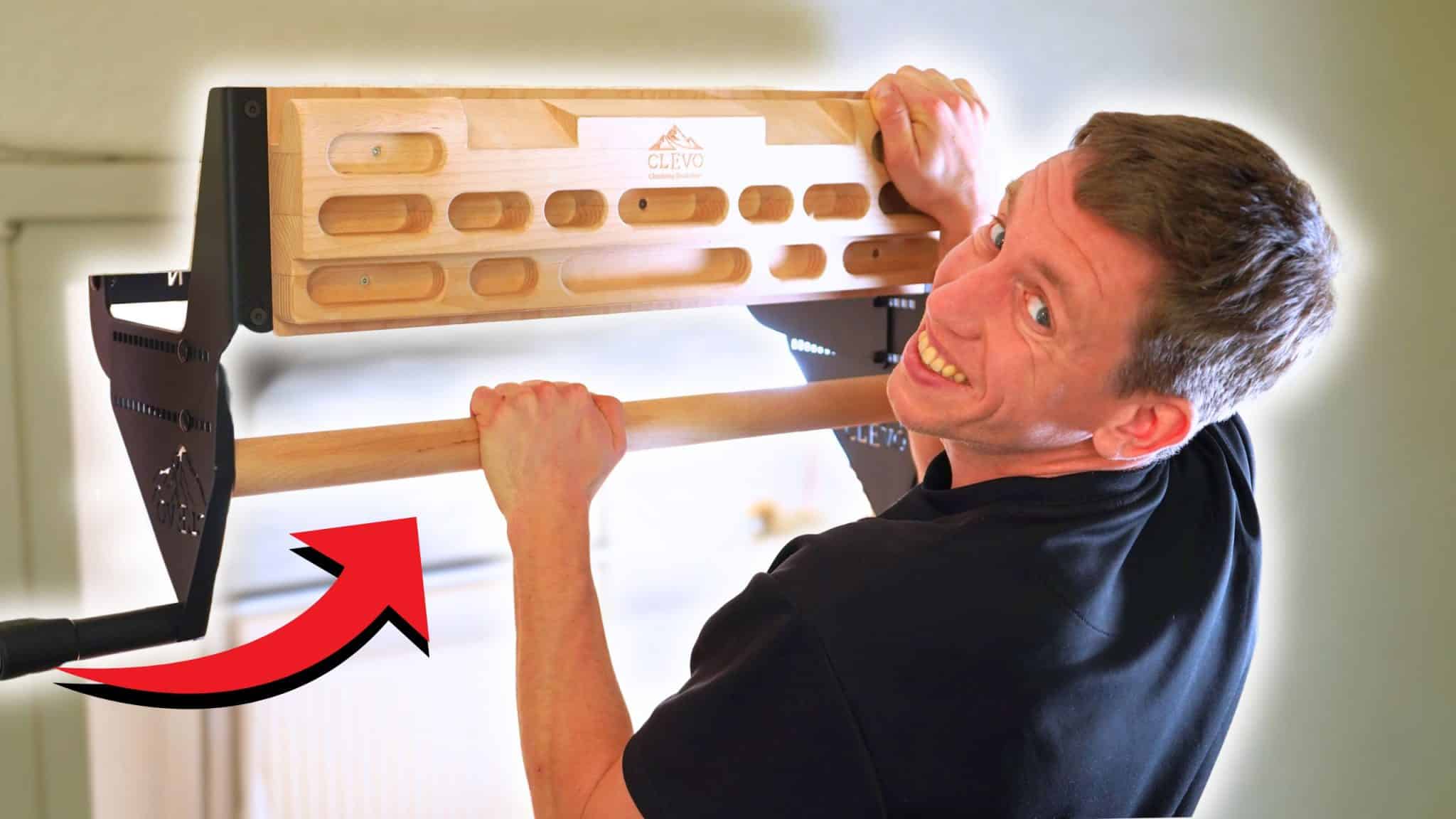- Why Girth Matters: Pull-Up Bar Dimensions and Size
- Overview Best Diameter for a Pull-Up Bar
- Thick Pull-Up Bar – (2″ or more)
- Standard Diameters Pull-Up Bar – (1.2″ to 1.8″)
- Thin Diameters Pull-up Bar – (0.8″ to 1″)
- So, What is the Best Diameter for a Pull-Up Bar?
- Frequently Asked Questions About the Best Diameter for a Pull-Up Bar
What is the best diameter for a Pull-Up Bar, you ask? Well, that is a question with some girth and one worth examining. It may seem obvious to you what the best diameter for a Pull-Up Bar is or maybe the question seems altogether inconsequential to you. But the farther you go down the rabbit hole of the Calisthenics industry, the more complex things become or so it might seem. While most aspects of working out and getting healthier are rather simple, you can also find yourself bogged down in a forest of details. Let us help you cut down some of those unnecessary details and until we come down to the core of the matter; what is the best diameter for a Pull-Up Bar or more specifically, what is the best diameter for YOUR Pull-Up Bar?
Why Girth Matters: Pull-Up Bar Dimensions and Size
You hear it very often; it’s not the size that matters but what you do with it. Well, this is partly not true. Size does matter, but it’s not the length that matters perse. If you have length enough to work with, having one that’s even longer won’t get you better results. Girth though is where it’s at. The girth of your bar will significantly impact your performance. We’re speaking of course about the diameter of your Pull-Up Bar. A different girth will alter the feel and grip you have on the bar, up to a point where it will even impact which muscles are being prioritized during your exercise.
Because a Pull-Up Bar is an integral part of Calisthenics, one of the most important parts of your Calisthenics Home Equipment, you do want to give this subject some thought. You’ll be using your Pull-Up Bar often and for a long time to come, so it might as well be up to spec.
To make it even clearer, we’re not talking about the dimensions of the Pull-Up Bar, e.g., its width, height, standoff from the mounting surface (think Wall-Mounted Pull-Up Bars or Ceiling-mounted Pull-Up Bars), et cetera. For this article, we’re specifically interested in just the diameter of the top bar and its various advantages. As you might suspect, the best diameter for a Pull-Up Bar is going to be a personal deliberation but it is one we can help you with.
At the end of this article, you will find a very simple size guide giving you an approximate best fit diameter Pull-Up Bar for your hand size.
Overview Best Diameter for a Pull-Up Bar
| Thin Pull-Up Bar | Standard Pull-Up Bar | Thick Pull-Up Bar |
| 0.8” to 1” | 1.2” to 1.8” | 2” and up |
| Easier grip on the bar | Uniform Full-Body Results | Improves Grip Strength |
| Less Focus on Hands/Forearms | Easier to Increase Intensity | Improves Forearm Strength |
| Easier for Smaller Hands | Easier for Beginners | Improves Forearm Size |
| Improves Overall Musculature |
Thick Pull-Up Bar – (2″ or more)
Let’s start with the fact that thick Pull-Up Bars in this category don’t really exist and are a bit of a unicorn. The closest you can get to a thick Pull-Up Bar measuring 2” or more in diameter are by either using foam grips or by using Fat Gripz. Foam coverings will inevitably squeeze and contract, because that’s what they’re meant to do. They are meant to provide cushion and comfort more so than girth.
Fat Gripz however are a very cheap option to transform your standard diameter Pull-Up Bar into a thick Pull-up Bar. Their sizes range from 1.75” to whopping 2.75” behemoths. This ought to accommodate practically any size of hands including but not limited to those of gorilla.
|
$89.95
|
|
A thick Pull-Up Bar, potentially realized with the help of a pair of Fat Gripz, has several advantages. To name them;
The Pros of a Thick Pull-up Bar
- A thick Pull-Up Bar increases grip strength. Having a strong grip is very important in the world of weightlifting and Calisthenics and it greatly benefits your overall strength training. A thick Pull-Up Bar helps with this because, to utilize it properly, you must squeeze a lot harder throughout the movement.
- A thick Pull-Up Bar helps develop your forearms. Having thick and solid forearms not only looks good but can be a sign of a strong physique. In this case, the thicker Pull-Up Bar helps build your forearms more effectively due to the higher number of muscles being engaged with each contraction.
- Thick Pull-Up Bars increase total muscular activation. When using a Pull-Up Bar, not only will your grip, hands and forearms be working much harder, but the entirety of your body will do the same. This all comes down to the intensity placed on your grip, and in response, the body will engage other muscles to assist.
Training with a thick Pull-Up Bar has its benefits, in the grip strength and forearm muscle development. Depending on your goals, training with a thick Pull-Up Bar may be well-suited to achieve those goals. You don’t even necessarily need a thick Pull-Up Bar or be stuck with one as your only purchase. You can combine a standard diameter Pull-Up Bar with Fat Gripz to get the best of both worlds when you need them.
Standard Diameters Pull-Up Bar – (1.2″ to 1.8″)
Most Pull-Up Bars have a diameter between 1.2” and 1.8”, this includes all store-bought and online-bought Pull-Up Bars. This standard is usually the best diameter Pull-Up Bar for most Calisthenics practitioners in most cases. This is why it is the standard, after all. Reality would be too easy though if the standard fit would be a one-size fits all. In a nutshell, the standard diameter Pull-Up Bars are well fit for both beginners and routine but still casual practitioners of Calisthenics. We should also mention that the standard diameter Pull-Up Bar is used the most by professional Calisthenics athletes and is mandatory for use during competitions either strict form or freestyle form.
Get it here:
Get it here:
The Pros of a Standard Pull-up Bar
- Results in a very homogenized workout. With a standard Pull-Up Bar, you will work the muscles you mean to work with Pull-Ups and Chin-Ups. This gives you more uniform results, which may be more esthetically pleasing to you. There is no single focus on forearms, hands or shoulders; all are worked out in equilibrium.
- You can focus on mind-muscle connection. In a sense, your mind-muscle connection determines how effectively you target the muscle you hope to work. Since you are not putting any more effort in your grip than is necessary, you can put more focus on other parts of your body during your Pull-Ups and Chin-Ups.
- It allows for rapid and continues improvements in all areas. Perhaps the most notable benefit to you using a standard diameter Pull-Up Bar is that scaling your full-body workout up is the easiest.
Since this Pull-Up Bar diameter is a middle-ground, so are your results in terms of what muscles are trained. Improving your overall physique is easiest done with a standard diameter Pull-Up Bar, since no particular part of your body is focused on for the kinds of exercises you do with the Pull-Up Bar. This means that escalation of your full-body exercise routines is the easiest while using a standard diameter Pull-Up Bar of 1.2” to 1.8”. It is also the easiest way to begin doing Pull-Ups as a beginner, since you require no part of your body to be extra strong to handle doing Pull-Ups.
Thin Diameters Pull-up Bar – (0.8″ to 1″)
For whatever reason, you don’t find thin Pull-Up Bars sold very often. Of course, most stores will cater to the widest customer base imaginable, those looking for a standard diameter Pull-Up Bar. This is understandable but at the same time somewhat of a pity. Thin diameter Pull-Up Bars do have their uses, despite their unusual feel. For one, a thinner diameter will allow you to close your fists more wholly, resulting in a much tighter and formidable hold. This is of course offset by the smaller surface area digging into your hands.
The Pros of a Thin Pull-up Bar
- Thin pull-up bars prioritize mind-muscle connection. Since you can almost completely close your fist around the Pull-Up Bar, your forearms and grip won’t suffer as much. This in turn allows you to fully focus on the muscles you work out. Over time, this will help to develop a stronger mind-muscle connection which will, therefore, allow for more muscle growth.
- Thin Pull-Up Bars accommodate smaller hands. For those of you with smaller hands, using a thinner Pull-Up Bar might be more comfortable and avoids excess focus on the hands and forearms people with normal hands would experience when using a thick Pull-Up Bar.
- Thinner Pull-Up Bars are very good for static holds. Static holds, holding positions that we intentionally place ourselves into, are typically very demanding on the body and require a lot of strength. Thinner bars help to accomplish these holds by allowing for a perfect grip on the bar with minimal strain on our grip.
With less effort in the grip, more attention can be laid on developing the musculature. A fully closed fist will be more structurally sound than a partially opened one. The tighter you can clench your fist around the bar, the less active strain you must put on the muscles in your hands and forearms to retain your grip. Thin diameter Pull-Up Bars will negatively impact comfort, as the smaller surface area of the bar will dig into your hands. This added discomfort can be lessened effectively with Calisthenics Gloves. Thin gloves will not significantly increase the overall girth of your grip but can dramatically improve the comfort of your exercises.
So, What is the Best Diameter for a Pull-Up Bar?
By far in most cases, we would say that you should invest your money in a standard diameter Pull-Up Bar. For most people, the best diameter for a Pull-Up Bar is somewhere between 1.2 inch and 1.8 inch, which is still a broad spectrum if you think about how diameter translates into radius, e.g., the length of your palms and fingers combined. There should be enough room between those 1.2 inches and 1.8 inches to accommodate most people with small-to-normal hands, normal hands and normal-to-big hands.
The advantages of a standard Pull-Up Bar are uniform development of all muscle groups associated with Pull-Up and Chin-Up exercises, an easier start for the beginner and an easier upscaling of full-body exercises. Standard diameter Pull-Up Bars are also what professional athletes use most of the time.
Thick Pull-Up Bars put more emphasis on the hands and forearms, which may be a personal preference of yours. Thick Pull-Up Bars may also act the same as a standard diameter Pull-Up Bar for people with very large hands. The cheapest and often only way to get to a diameter considered thick, is to use Fat Gripz.
Get it here:
Get it here:
Thin Pull-Up Bars on the other hand focus much more on the muscles aside from those in the hands and forearms. They can also act like standard Pull-Up Bars for people with smaller hands. Any discomfort from the smaller surface area of the bar itself can be ameliorated effectively with Calisthenics Gloves.
Our advice for the beginner Calisthenics practitioner is to start with a standard diameter Pull-Up Bar. Most hands will fit any diameter in that category quite comfortably. You will be able to close your fist well enough, while still also working out your grip strength and forearms successfully. You can always upgrade, or rather differentiate, to a thick diameter Pull-Up Bar using Fat Gripz.
Diameter Pull Up Bar Hand Size Chart
The most important measurement is the distance between the first and second knuckle of your pointer finger. This is where most of the weight will be residing. This distance should roughly equate to the diameter of the Pull-Up Bar, when we consider a “standard diameter” for your hands. You can comfortably go up a quarter inch in most cases and not notice a difference.

Frequently Asked Questions About the Best Diameter for a Pull-Up Bar
Here are a few frequently asked questions which help to answer the question; what the best diameter for a Pull-Up Bar is;
A thicker Pull-Up Bar puts more focus on building grip strength and forearm strength and size. Since you can't close your fists as tightly, you'll have to squeeze harder during the exercise. Depending on your goals, these may be attained by using a thicker Pull-Up Bar. A thick Pull-Up Bar is therefore circumstantially better but not by default.
The army uses 1.5-inch diameter bars which are 12 feet long in Military Calisthenics.
A thinner Pull-Up Bar allows you to close your fist more wholly, resulting in greater grip strength. You will be expending less effort maintaining your grip on a thinner bar, allowing you to focus more on the muscles intended to be worked out doing Pull-Ups and Chin-Ups. Any discomfort that results from a thinner bar can be alleviated by wearing thin Calisthenics Gloves.



